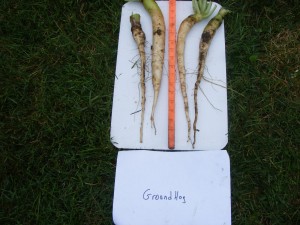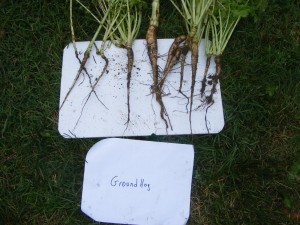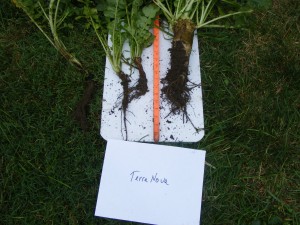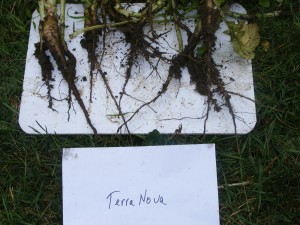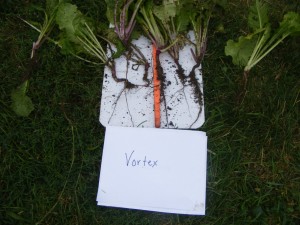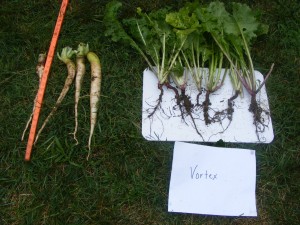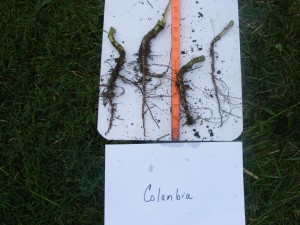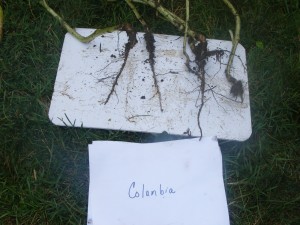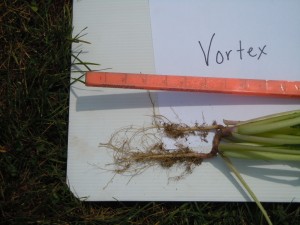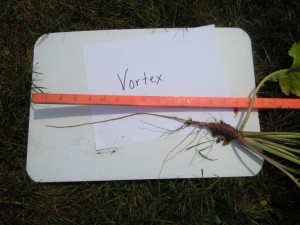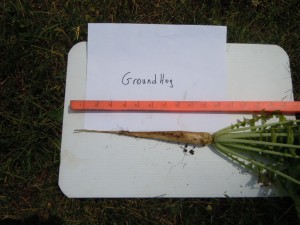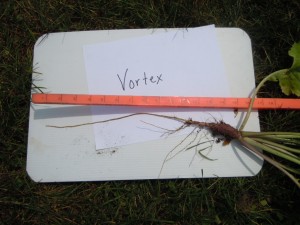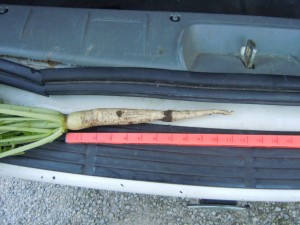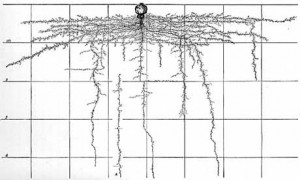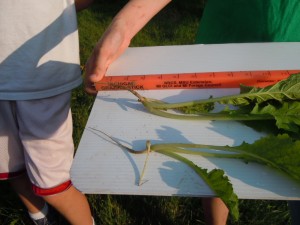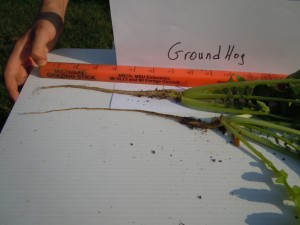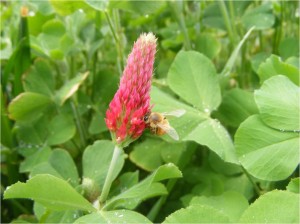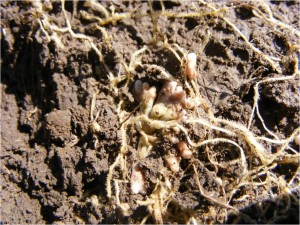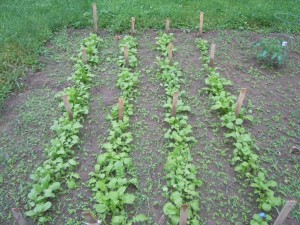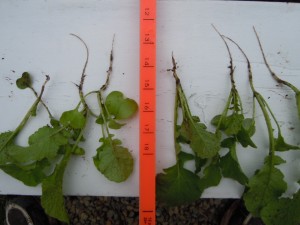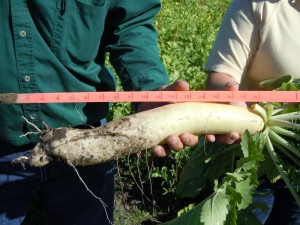
There are big differences in cover crop radishes. Some are outstanding and consistent; deep and fairly large tubers (tuber girth seems to be related to fertility and age of stand). In the thumb of Michigan I saw over 300 acres of fields planted at 10#/acre that were just what the farmer wanted. We found most of the tubers 8-12” deep and we could not really find the real bottom of the roots as we broke them off in the soil.
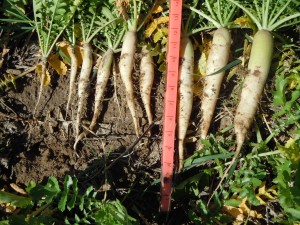
|
|
While some varieties have good tubers, in other instances I have found real problems. In a field in NE Indiana a SWCD director brought some radishes from a farmer’s field that were verysmall. The farmer planted around 100 acres of a VNS radish and he was not happy. I don’t blame him…look at the photo below.
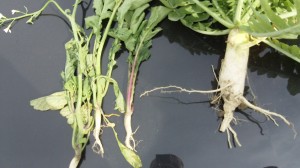
What makes this story even more interesting is that the VNS radish (VNS = Variety Not Stated) cost the farmer 30-40 cents less per pound than the improved variety. Unfortunately, he’s unhappy because his radishes are not performing. The farmer saved $3-4/acre and is frustrated. Two things…and this is for dealers and producers…#1 –Choose to buy from a trustworthy source #2) IF there is a big price savings…beware there is a reason for that spread! Saving 15-20% on seed is HUGE! If there is that much saving ask questions and get good answers!
